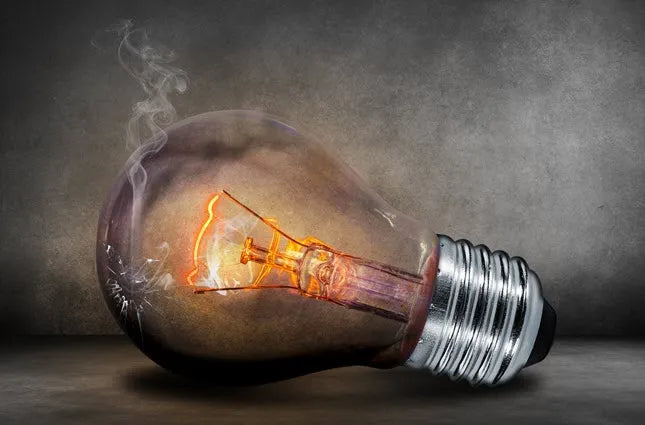Imagine lying in bed with your favorite calming playlist, the gentle scent of lavender wafting from your diffuser. You’ve set the perfect mood to unwind and leave the day’s stress behind—except something feels off. Your beautifully designed lamp is on, but the ambiance just isn’t quite right. You don’t want the harsh brightness, but total darkness isn’t appealing either. What you’re missing is a dimmable light.
Why Dimmable Lighting Matters
Dimmable lighting allows you to control the mood of your space effortlessly. With the right dimmable light bulb, you can adjust your lighting to match any situation, whether it's winding down after a long day or setting the scene for a cozy movie night.
At Oz Smart Things, we’re here to help you choose the perfect dimmable lighting for your home, ensuring compatibility between your bulbs and dimmer switches so you can achieve the ambiance you desire.
Understanding Dimmable Light Bulbs
Not all light bulbs are compatible with dimmer switches, and choosing the wrong combination can lead to issues like flickering, buzzing, or even damage to your lighting system. Here’s a quick guide to the different types of dimmable bulbs and their compatibility:
-
Incandescent Bulbs
Traditional incandescent bulbs work well with most dimmer switches. They emit a warm light by passing electricity through a wire filament. However, incandescent bulbs are less energy-efficient and have been phased out in many regions due to environmental concerns. -
Halogen Bulbs
Halogen bulbs are similar to incandescent but with a halogen gas that increases efficiency and lifespan. They provide bright, crisp light and are fully dimmable, making them a good choice if you prefer the qualities of incandescent lighting with improved performance. -
Compact Fluorescent Lights (CFLs)
Standard CFLs are not typically dimmable, but there are dimmable versions available. Look for a dimmable ballast indicator on the packaging. Dimmable CFLs have come a long way, offering smooth dimming down to about 2% of full brightness and a longer lifespan compared to incandescents. -
Light-Emitting Diodes (LEDs)
LEDs are the most energy-efficient and long-lasting option available today. Many LEDs are dimmable, but it’s crucial to ensure compatibility between the LED bulb and your dimmer switch, as not all LEDs work with all dimmers. Dimmable LEDs offer a smooth dimming range from 100% to as low as 0.5%, making them ideal for creating the perfect ambiance.
Choosing the Right Dimmer Switch
The right dimmer switch is just as important as the bulb. Incompatible dimmers can cause issues like flickering, limited dimming range, and inconsistent performance. Here are some common dimmer types:
- Universal Dimmers: These are versatile and can control incandescent, halogen, dimmable CFLs, and dimmable LEDs.
- Halogen Dimmers: Designed specifically for halogen and incandescent bulbs, but not suitable for CFLs or LEDs.
- Fluorescent Dimmers: These work with fluorescent fixtures that include dimming ballasts.
- ELV (Electronic Low Voltage) Dimmers: Used with dimmable LED power supplies, such as LED strips and under-cabinet lighting. They require a neutral wire for installation.
- MLV (Magnetic Low Voltage) Dimmers: Suitable for recessed lighting systems that use magnetic low voltage transformers.
Why Dimmers Cannot Be Used on Fans
It's important to note that dimmer switches are not suitable for controlling ceiling fans or other motorized devices. Dimmers work by reducing the voltage to the light bulb, which adjusts the brightness. However, applying the same principle to a fan motor can cause it to hum, overheat, or even get damaged. Ceiling fans require a different type of control called a fan speed controller, which is specifically designed to handle the electrical demands of a motor. Using a dimmer switch on a fan can lead to erratic operation and can be a potential fire hazard.
Safety Considerations for Dimmable Lighting
While modern dimmable bulbs like LEDs and CFLs are generally safe, it’s important to follow a few precautions:
- Avoid Enclosing Bulbs: Enclosing bulbs in a fixture can trap heat, leading to overheating and potentially shortening the bulb’s lifespan.
- Use Quality Products: Opt for branded, high-quality dimmers and bulbs to ensure reliability and safety.
- Ensure Compatibility: Always match bulbs and dimmers according to their compatibility guidelines.
The Takeaway
Dimmable lighting is a fantastic way to enhance the atmosphere of your home. While incandescent and halogen bulbs are traditionally compatible with dimmers, advances in lighting technology mean that CFLs and LEDs are now excellent dimmable options as well. Always check for compatibility between your dimmer switch and bulbs to avoid any performance issues.
Ready to upgrade your lighting? Explore our range of dimmable bulbs and smart dimmer switches at Oz Smart Things and find the perfect solutions to elevate your smart home’s ambiance.

